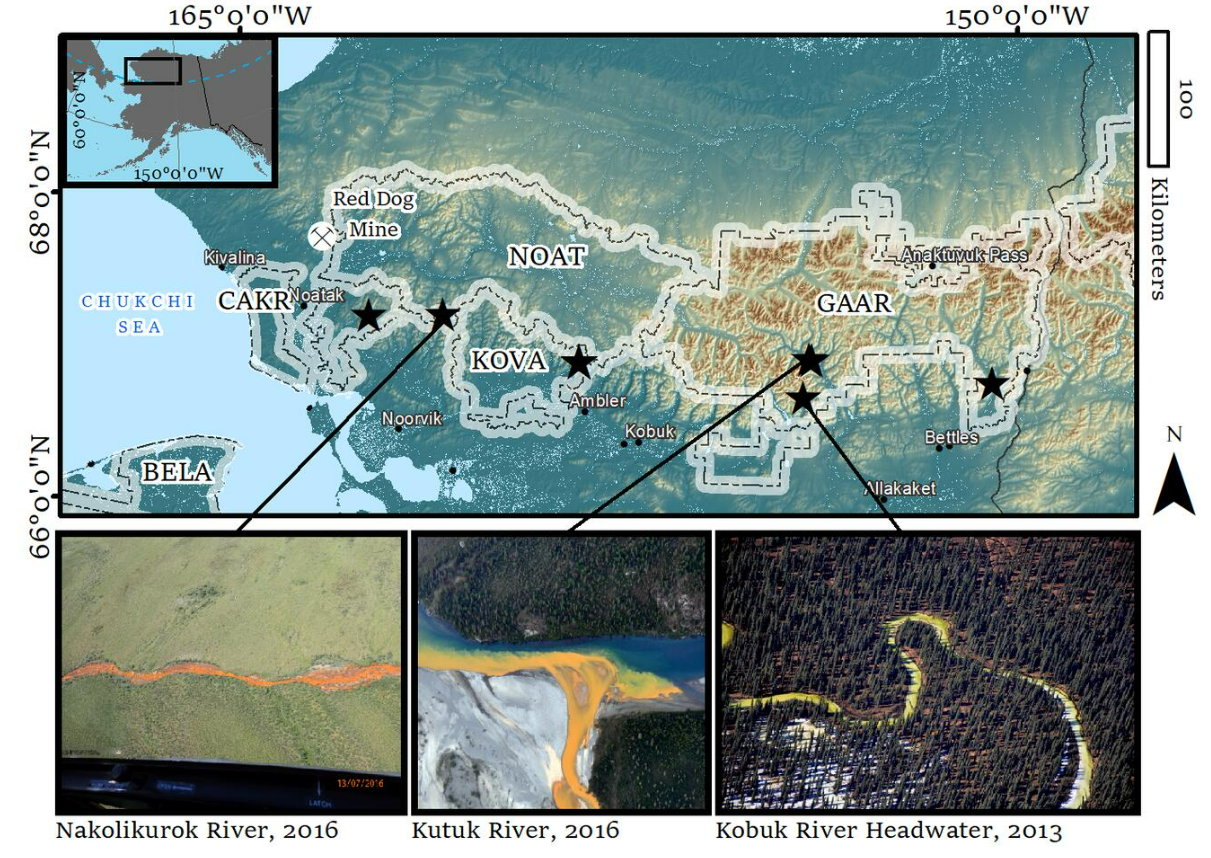Alaska’s rusting rivers are proving to be a bit of a conundrum for scientists at the United States Geological Survey (USGS). Iron-bearing minerals appear to be the culprit, but the reason behind their increasing abundance is not totally clear.
In recent years, researchers have documented how numerous streams in the Alaskan Arctic Region have become increasingly orange-tinted. One of the impacted riverways is the monumental Kobuk River, which weaves through northwestern Alaska for some 451 kilometers (280 miles).
To understand the carrot-colored waters, the USGS partnered with the National Park Service, the University of California-Davis, the University of Alaska-Anchorage, and Alaska Pacific University. Their teams of scientists set out to map the extent of the orange waterways, learn about its impact on the wider ecosystem, and answer the question of what’s causing the color change.
Their research has revealed that the orange streams have higher concentrations of iron, less dissolved oxygen, and more acidic water than nearby clearwater streams. According to Scientific American, the pH of some smaller rivers is as low as 3.5, which is even more acidic than orange juice.
So, what’s the cause? One leading theory is that rising temperatures in the region are causing permafrost to thaw, releasing iron that was previously locked up in the frozen soils. The Arctic has warmed nearly four times faster than the rest of the world and the northern stretches of Alaska are no exception.

Map of orange stream observations across Arctic Inventory and Monitoring Network (ARCN) parks in northern Alaska.
Image credit: USGS/Public Domain
Another idea is that bacteria and complex geochemical processes could be to blame. The thaw of permafrost may be allowing bacteria to start reducing oxidized iron in the soil. Once groundwater carries it into an oxygenated stream, it becomes oxidized again and takes on this vibrant orange shade.
Rising temperatures have “really awakened a lot of these geochemical processes that have been basically stalled out for 5,000 years because the ground’s been frozen,” David Cooper, an ecologist at Colorado State University, told Scientific American.
Rusting rivers may look otherworldly, but it’s not uncommon for iron to have this impact on Earth’s water systems. Earlier this year, astronauts onboard the International Space Station (ISS) saw how the Betsiboka River Delta in Madagascar had turned a rich red hue due to iron-rich sediment in its waters.
On the opposite side of the planet to the Arctic, there’s a site known as the Blood Falls of East Antarctica, which looks as if blood is oozing from the ice. This gory sight was first seen by humans in 1911 during one of the early Antarctic expeditions by Europeans. At the time, the explorers thought the vibrant color was due to red algae. However, a study in 2023 found that analyzed samples of Blood Falls’ water and found an abundance of iron-rich nanospheres that turn red when oxidized.
Source Link: Alaska's Rivers Are Running Orange And Becoming More Acidic Than OJ